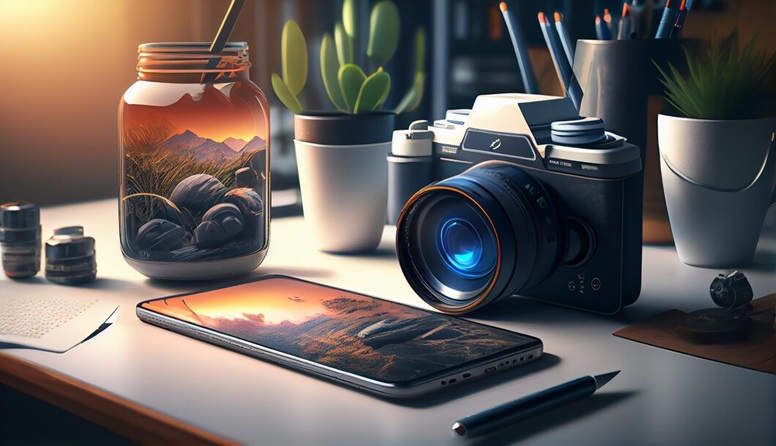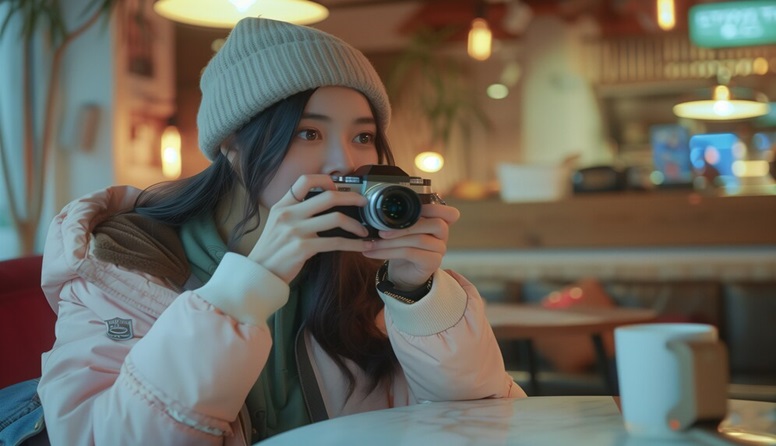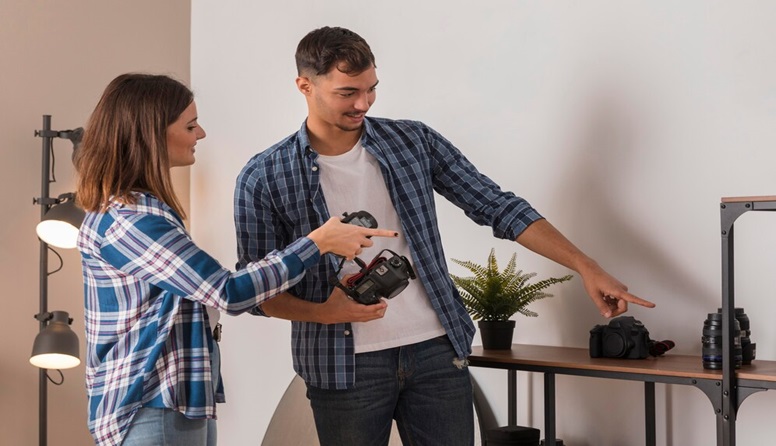1. How to Turn Basic Photography into Professional Photography
Professional Photography is not simply the recording of images but it’s being able to come up with visuals that can convey a message, an emotion, a meaning. Regardless of whether the professional photography/er is using a smartphone or a professional DSLR, knowing which tricks are to be employed, anybody can learn how to transform basic photography into professional photography. In the next few slides, I will outline beginner practices and more sophisticated tips that will enable you to improve your skills on photography.
2. How to Take Professional Photos
A Definitive Beginner’s Guide for professional Photography and the Home/Smartphone Shooter
- To home professional photography and or smartphone photography, you’ll agree with me it is very effective provided you master how to harness it. Thus, the first thing that you need would be to learn about lighting in order to achieve a professional photography look when shooting with your home setup. It is all about the light: try to shoot in the natural light where the sun is your best friend and shoot preferably in the early morning before the sun gets too high, or in the evening before it gets dark. When natural light cannot suffice, purchase cheap lighting gears, for example, LED panels or ring lights.
- It is also simple to make vast improvements to your DIY professional photography methods. For instance, using a white bed sheet to make a ‘light diffuser’ can decrease the contrast between light and dark and overly bright light sources. Moreover, I would like to suggest using the things from your home as props and background can give more context to the shots.
- It sometimes feels that many things can be done on a smartphone and that is why it is important to get the most out of your phone. Find out about programs that allow changing exposure and focus on a smartphone camera field manually. After shooting, some photos can be altered using applications like Snapseed or Lightroom Mobile which will give the images a professional photography look even if you do not use a high-quality camera.

Future Ready How RVR School of Photography Equips Students for Industry Success By Simran
3. Transform Your Photography.
15 Quick Ways to Achieve a Professional photography Look
Applying different changes and Photo Editing Techniques to your pictures is the initiation to turn them into professional photography. Here are 15 quick tips to get you started.
- Master Composition: This is where you learn to divide the image in half diagonally to have a well-balanced picture. Position the subject in such a way that aligns it with the gridlines to improve the composition.
- Use a Tripod: A stable tripod reduces cases of vibrations hence enhancing clear and quality images. This is important for general home professional photography as well as for other more professional shots.
- Experiment with Angles: Experiment with changing the angles in order to get the best portrait of your object. That is why it can be mentioned that unique attitudes make a professional photography outstanding.
- Optimize Your Camera Settings: Change the aperture, shutter speed, and ISO in a way that fits the environment that you are using while shooting. In professional photography recommendations regarding ISO, a lower value would be an addition usually recommended for this kind of shot.
- Enhance Focus and Depth of Field: Set the aperture to a low number or ‘f-number’ to produce a shallow focus where the subject remains sharp and the background is fuzzy.
- Pay Attention to Lighting: This is to ensure that the lighting used is soft and diffused to reduce the formation of cast shadows. If you are shooting inside then place the subject near a window because the natural light brightens up the picture as professional photography.
- Edit Thoughtfully: Though, do not overedit with the help of the editing instruments which can be found in the Internet. There is usually the necessity to modify brightness, contrast as well as sharpness to professional photography enhance the quality of the picture.
- Clean Your Lens: You just spoil the best picture with a smudged or dirty lens that seems like part of the equipment. It is important to clean the lens to avoid the forming of fog it and hence blurry images.
- Utilize Filters Sparingly: The application of filters can be of great help when editing your pictures but should be applied sparingly so that it does not give the image a fake look.
- Understand Color Theory: Learn about complementary color and color balance to have wonderful work with colors in your photos as professional photography.
- Practice Patience: Indeed, sometimes a good shot or a good picture takes time. Should wait for the best time and right position to capture the best picture.
- Incorporate Textures and Patterns: To make more of your photos interesting and dramatic bring those textures and patterns to professional photography.…
- Use High-Resolution Settings: Make sure to always shoot at the highest capacity possible to get clear and high-quality images as professional photography.
- Avoid Overexposure: It is important not to end up with highlight areas overexposed, thus monitor exposure levels and make relevant changes.
- Seek Inspiration: Observe professional photography work and attempt to emulate the features that you consider to be well done.

4. How to Take Professional Photos
Basics Guides for Beginners
- Hence, when the novice professional photography is planning to go pro, then there is nowhere better to start than here. First of all, you should know how your camera works, what buttons do, and how they can be useful in your professional photography process. Know about aperture, shutter speed, and ISO, these are the basic elements to govern the exposure and the quality of your photo.
- Purchase a good lens that does all the job or one that will cover the role of a zoom as well as that of a prime with a large aperture for low light and desired bokeh. To achieve professional photography result in is highly depends on the purpose but having a DSLR or a mirrorless camera with the ability to change lens is usually a great place to start with.
- It’s important to know the basics of composition and lighting. Good composition leads the viewer’s eye and improves the quality of your pictures. Try to mix things, so you think they’ll look interesting, and also start to understand how to use light to bring attention to your subject and create atmosphere.
- Some of the common professional photography photo ideas are as follows:-, Portrait- This is one of the most popular ideas that many photographers embrace when shoot for their clients. Both genres come with their own set of methods and strategies, therefore try different styles to come up with the ones that inspire you.

5. What Makes a Photo Look Professional
- Technique and art are the two aspects that define when a particular photograph is good. Aspects such as subject adherence or the optical accuracy, brightness control or the general utilization of light and dark are significant. Also, the aspect of composition has its importance. The composition of the professional photography photos shows characteristics such as balance symmetry or even some lack of balance that one is attracted towards.
- What cleans a professional photography usually defines as filters and other manipulations that increase the picture’s quality and eliminate nuances. Realize color balance, sharpening and discoloration, removing objects or individuals who must not be seen, etc. It should be noted that one should not overdo the image editing since the excessive amount of adjustments will take away from the photo’s realistic aesthetics.
- Another important area of concern is how to produce marvelous photo shot time after time. This entails the use of practice, knowledge update and the willingness to try. Check the materials produced frequently and get the criticism to evaluate the professional photography areas of strength and weakness.
Conclusion:
A lot of commitment, time, and, of course, useful tips are needed to transform regular photography into professional photography. This is why at the RVR School of Photography, we have complete courses so that one can learn from a beginner level up to an expert level. If you want to gain deeper understanding in matters concerning cameras or editing tools or are keen in certain types of photography then this programs offer you the background and help you require.Come to the RVR School of Photography to have the opportunity to fully realize the hidden potential and turn your hobby into a job. They are available for beginner, intermediate and advanced courses and are given by professional photography so one can learn basics or improve their portraiture techniques while going through the classes, exercises, practical assignments. Join our course now and become on your way to being the proficient photographer you’ve always wanted to be.
Clarify Your Doubts (FAQ's)
We reimburse all expenses of the Client for the payment of fines and penalties that were caused by mistakes made by us in accounting and tax accounting and reporting.
We reimburse all expenses of the Client for the payment of fines and penalties that were caused by mistakes made by us in accounting and tax accounting and reporting.
We reimburse all expenses of the Client for the payment of fines and penalties that were caused by mistakes made by us in accounting and tax accounting and reporting.
We reimburse all expenses of the Client for the payment of fines and penalties that were caused by mistakes made by us in accounting and tax accounting and reporting.
We reimburse all expenses of the Client for the payment of fines and penalties that were caused by mistakes made by us in accounting and tax accounting and reporting.
We reimburse all expenses of the Client for the payment of fines and penalties that were caused by mistakes made by us in accounting and tax accounting and reporting.
We reimburse all expenses of the Client for the payment of fines and penalties that were caused by mistakes made by us in accounting and tax accounting and reporting.
We reimburse all expenses of the Client for the payment of fines and penalties that were caused by mistakes made by us in accounting and tax accounting and reporting.

